Kimono Flea Market ICHIROYA's News Letter No.624
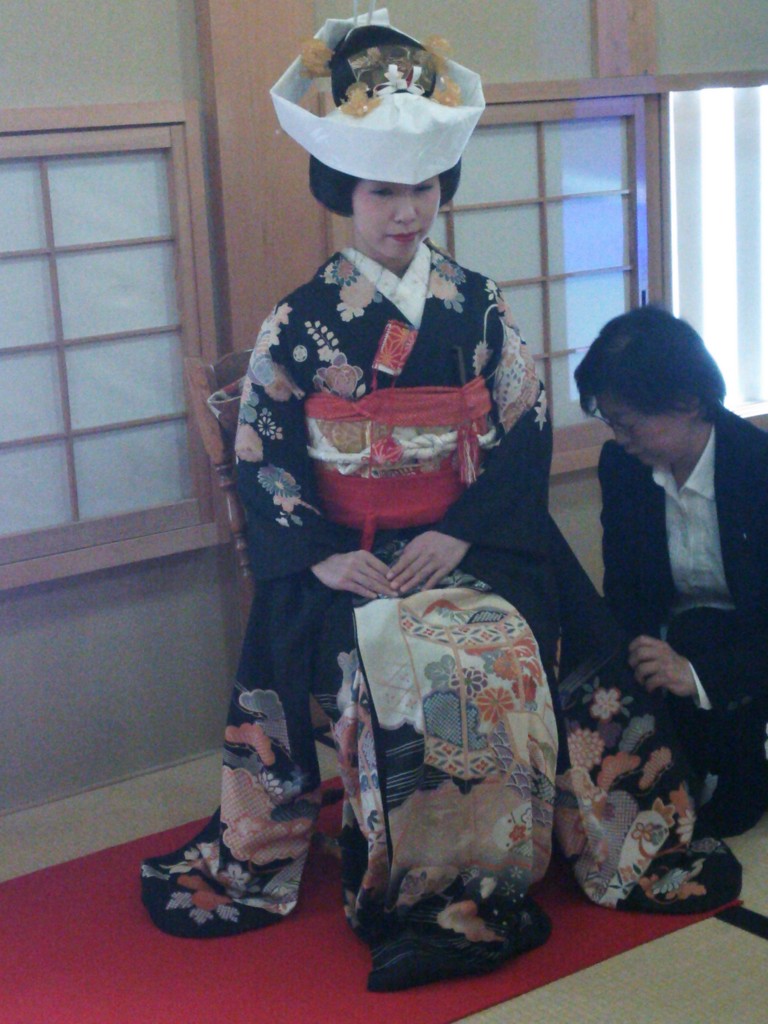
Helllo from Japan, this is Yuka from Ichiroya.
Have you heard the Japanese word `KON-KATSU'? Not TONKATSU (Pork Cutlet).
Kon-katsu is, in short, `marriage hunting' (it is an abbreviation of Kekkon-Katsudo).
Doing Kon-katsu means individuals are actively looking for a life parter.
Because of the falling birthrate, local cities are having some event for promoting Kon-katsu (is it OSEKKAI-overkind action?). They often have matchmaking parties and other event. I am not sure these activities are working.
In our city (Tondabayashi city, which is one of a southern city of Osaka prefecture), there is an old town called Jinaicho(also called Jinaimachi). Last November, Tondabayashi Jinaimachi Culture Trust Institute had a demo-wedding of old time (around meiji period 1868-1912). This is our newsletter about that event last year. The black wedding kimono worn in this event was from Ichiroya.
This year, they had an event of showing kimono dressing of a bride with the same kimono.
This time Suzuki sensei(a professional dresser) showed how to dress a bride with kuro hiki furisode.
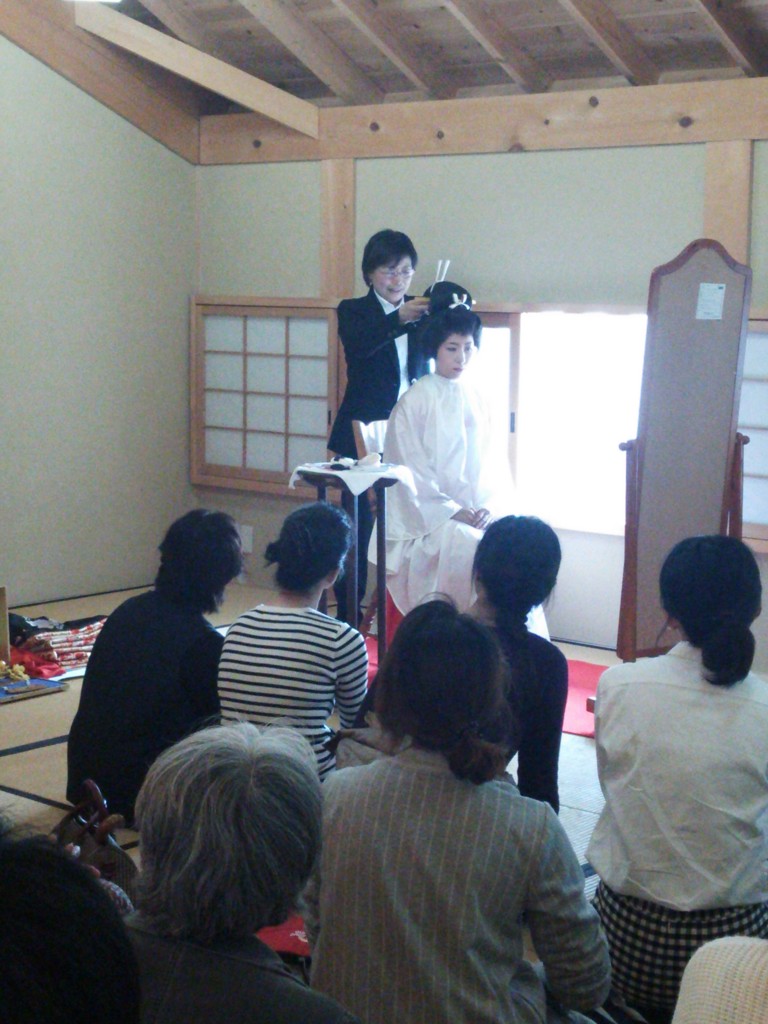
She is showing how to put hair accessories (kanzahi and kougai). She mentioned the difference of hair arrangement between east and west of Japan. In east(Tokyo area), people prefer `chic' taste and use less decoration with the bride's hair but in Kanasai(Osaka area), more decorative way is preferred and use more kanzashi. Yes it must be true- we recognize customers from Tokyo choose chic patterns and colors while customers from west seem to like more decorative patterns with vivid colors.
Here, they are putting Tsunokakushi, a bride's hood.
Tsunokakushi is like a veil, it is said to hide `horns' of bride's jelousy or just hiding hairline but there are several theories for the origin.

As you can see, dressing a bride is a hard work! and need a lot of power and technique. This scene reminded me of Scarlett, wearing a tight corset in Gone With the Wind:-)
They are tieing datemaki, undersash before tieing obi.
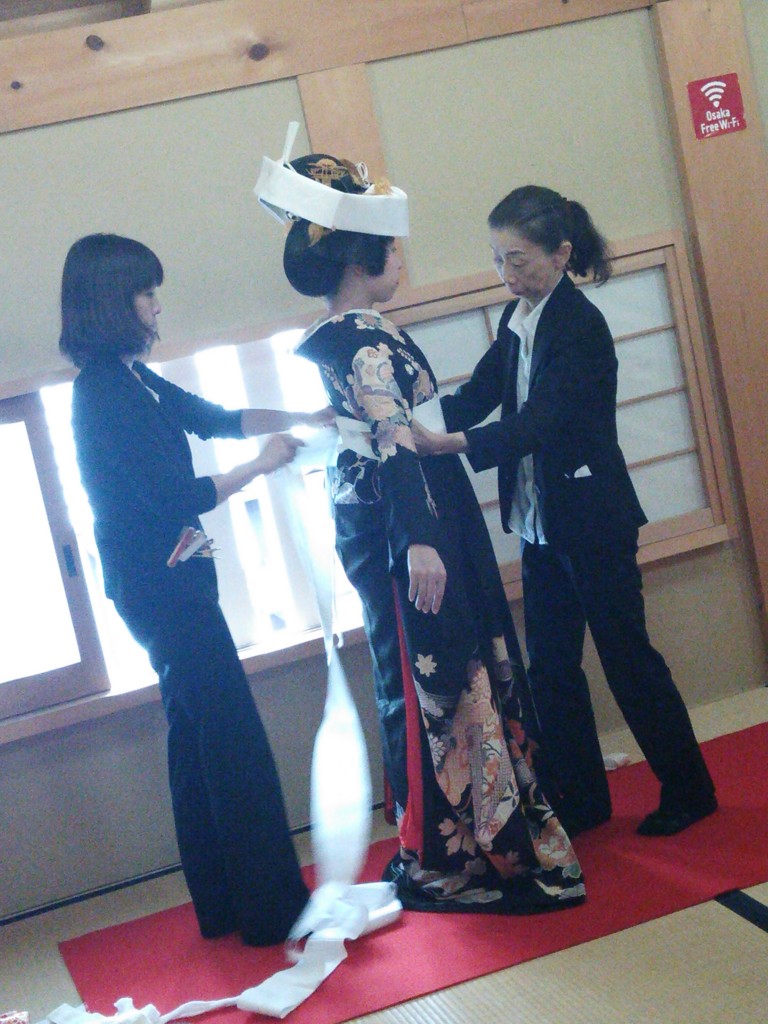
Obi is Maru obi, very stiff - the dresser says it is the hardest type of obi to tie even for professionals.
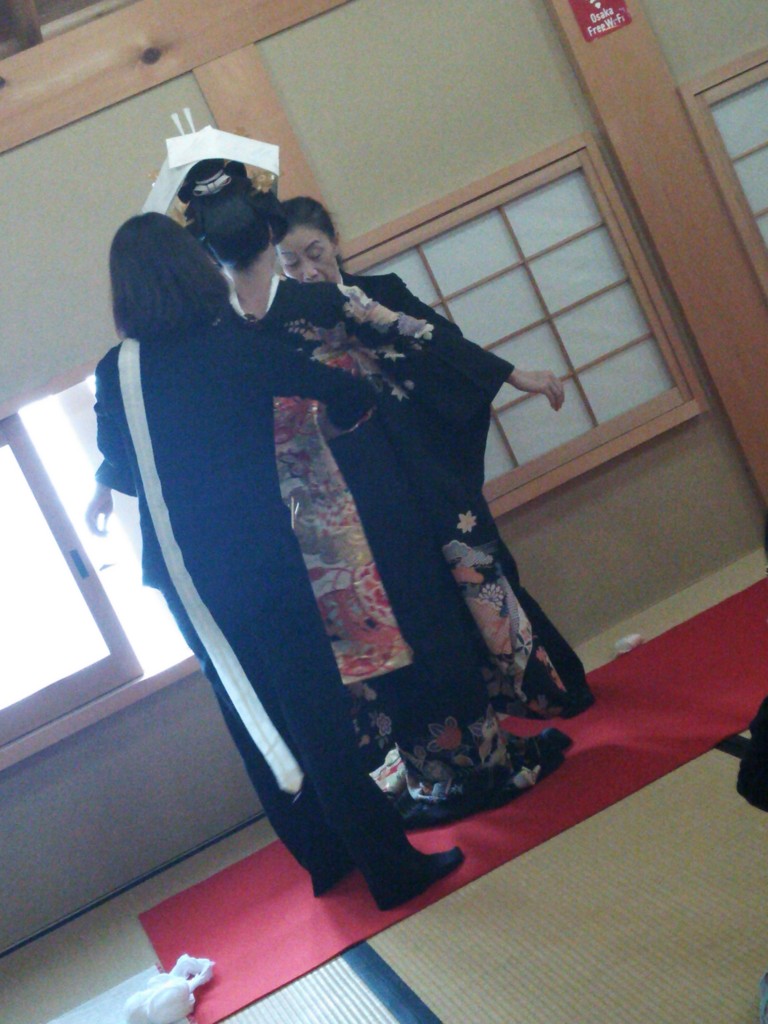
The guy next to this girl(she is doing a model, not a real bride) is her friend. The hakama is a bit too short for this tall guy.
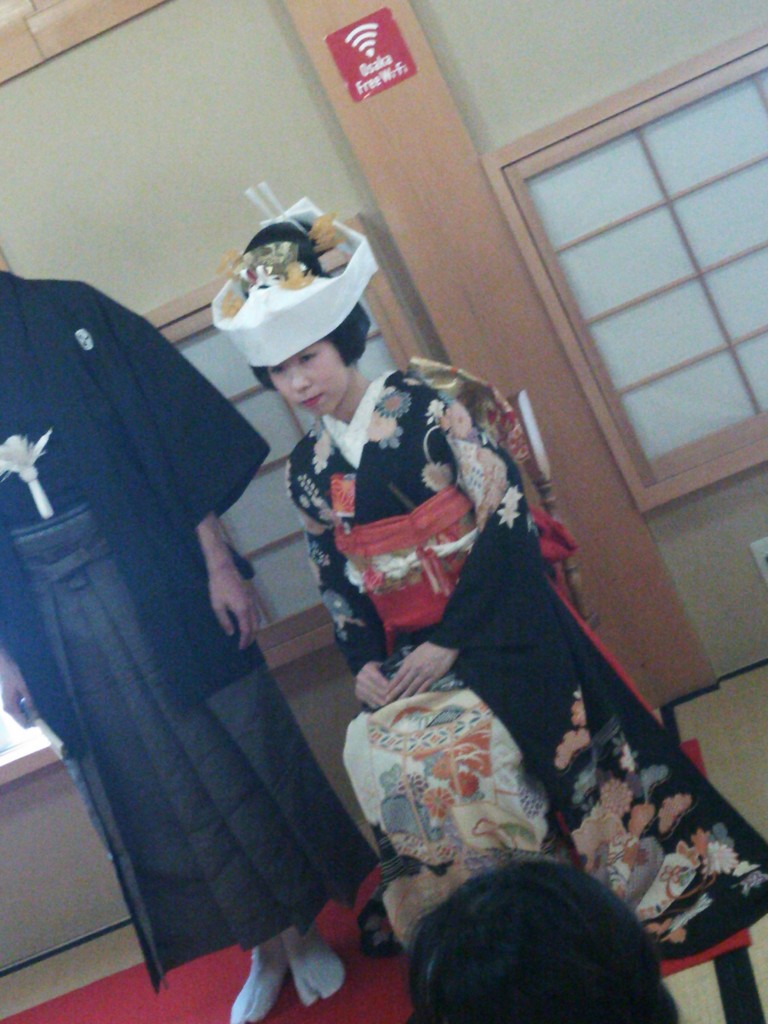
Suzuki sensei told about old traditional wedding. It used to be brides often appeared in wedding costume from home and neighbors came to celebrate. People used to get married in local shrines and temples and had wedding reception at home. The bride's father greeted neighbors at the front of the house and walked just like the procession (demonstration) they had in this JInaicho last November.
Suzuki sensei told her recent experience of dressing a bride in Kyoto who also got dressed in wedding kimono in her home and did the procession from home. When she was dressed, she and her parents came out of the house, and the neighbors were waiting. Her father greeted neighbors and then, the bride herself also greeted- she thankd the neighbors for coming and also asked them to look after her parents after she is gone. (`They will be just two of them from now on, and I will be away, dozo futariwo yoroshikuonegai simasu' -thank you for your kindness to my parents in advance). It was really touching, Suzuki sensei said about the bride's short speach.
Wedding is really changing, `Garden wedding' seems to be a trend. Big hotel weddings are popular but recently more casual and small wedding (at restaurants, small halls and so on) seem to be incresing. Parents often ask their daughters to dress in wedding kimono and take photos. It is really special and they are eager to see their daughters in traditional kimono. Even though our life styles changed and kimono are seldom worn in our daily life, still wedding kimono might be something we like to leave to next generation.
Tondabayashi city is promoting weddings in Jinaicho. There are big old residence(some are National Important Cultural Property)and they are hoping to have a wedding there in future.
http://www5d.biglobe.ne.jp/~heritage/Sugiyama.html
If you are in Osaka, on November 28th and have a chance to visit Tondabayashi, they have an event of walking in kimono and taking photo by professional photographer. They have rental kimono also, so you do not have to have kimono to participate in this event(reservation required and the fee is 3000 yen including lunch. Rental kimono fee is 2000 yen). They are working to have more tourists and hoping to make this area to be a place where you like to walk around in kimono.
It is a quiet and small local area (not a big city like Kyoto) but if you are interested, there is a nice inn for women as we mentioned before.